- Home
- Haruki Murakami
Absolutely on Music: Conversations With Seiji Ozawa Page 8
Absolutely on Music: Conversations With Seiji Ozawa Read online
Page 8
MURAKAMI: So what you’re saying is that Brahms and Beethoven are pretty much the same when it comes to the way they integrate the sounds of the orchestra?
OZAWA: Yes. There’s a lot more breadth to the sound of Brahms, but for Brahms and Beethoven, the instrumentation itself is pretty much the same.
MURAKAMI: Why is it, then, that when I listen, their sound is very different?
OZAWA: That is true. [Pause.] Look, Beethoven himself changes a lot in the Ninth. His orchestrations were quite limited until he got to his Ninth Symphony.
MURAKAMI: My impression is that when Brahms and Beethoven use a similar group of instruments, the result is still something very different. With Brahms, it’s as if a new sound comes in between any two sounds, making the whole thing one level denser. Maybe that’s why it’s so much easier to grasp the musical structure in a Beethoven piece.
OZAWA: Yes, of course. The structure is much easier to see in a piece by Beethoven. You can hear the winds and the strings talking to each other. But Brahms creates his unique sound by blending the two together.
MURAKAMI: Ah, that helps me understand the difference.
OZAWA: This is clear even in Brahms’s First Symphony. That’s the reason everybody says that Brahms’s First Symphony is like Beethoven’s Tenth. That’s where the connection lies.
MURAKAMI: So where orchestration is concerned, Brahms continued with the reforms that Beethoven began with his Ninth, and final, Symphony.
OZAWA: That’s the idea.
MURAKAMI: And after Brahms, the Saito Kinen goes on to make Beethoven symphonies central to its repertoire.
OZAWA: Yes, and after Beethoven we’ve been doing Mahler—the Second, the Ninth, the Fifth, and the First, I think. And recently we did our first French piece, the Symphonie fantastique. As for opera, we did Poulenc and Honegger. I used to consult with William Bernell, a guy in San Francisco who made programs. The two of us would get together and decide what to perform. I got his advice when I was in Boston, too, and all the way from the beginning with the Saito Kinen. He died last year at the age of eighty-four. We worked together for almost fifty years.
MURAKAMI: If you ever felt like playing some Sibelius, that would make me very happy. I love his symphonies. I’ve never heard a Sibelius by you other than the Violin Concerto you recorded with Viktoria Mullova.
OZAWA: Which of his symphonies do you like? The Third? The Fifth?
MURAKAMI: The Fifth is my favorite.
OZAWA: That last movement is good, isn’t it? When I was taking lessons from Maestro Karajan in 1960–61, I conducted the finale of the Sibelius Fifth. That and Mahler’s Das Lied von der Erde. He gave me those as an assignment in big, romantic pieces.
MURAKAMI: Maestro Karajan was very fond of the Sibelius Fifth, wasn’t he? I think he must have recorded it four times.
OZAWA: Yes, he liked it a lot. His performances were wonderful, of course, but he also used it to teach his disciples. He always told us that it was the job of the conductor to create long phrases. “Read what’s behind the score,” he would say. “Don’t just read individual measures; read in longer units.” We were accustomed to reading four- or eight-measure phrases, but he saw the music in terms of very long units—sixteen measures, or, in extreme cases, up to thirty-two measures. None of this is written in the score, of course, but he insisted that it was the conductor’s job to read that way. The composer was always writing with those long phrases in mind, so it was up to us to find them. That was one of the most important things he taught us.
MURAKAMI: Karajan’s performances always have this very solid narrative that comes from his creation of those long phrases. I’m often amazed to hear how his old recordings, in particular, have this element of storytelling or persuasiveness that has survived the years without the least sense of aging—though every now and then, I admit, there will be something that strikes me as a little old-fashioned.
OZAWA: There are those moments, it’s true.
MURAKAMI: It seems to me that in Karajan’s music, there’s a fairly clear dividing line between the two. It can go either way, with little compromise in either case.
OZAWA: You may be right. Furtwängler was the same way.
MURAKAMI: Now we’re talking about a national treasure.
OZAWA: It’s true. [Laughter.] And then there was Karl Böhm. You know, from Vienna. I once saw him conduct Richard Strauss’s opera Elektra at Salzburg. He looked as though he was conducting with little twitches of his fingertips, barely moving his arms, but the orchestra—it was really like magic—produced this huge sound. [Ozawa spreads his arms wide.] I’m sure there must have been some special, historical tie between him and the orchestra. I mean, he was really old when I saw him, and he conducted with small movements and no big cues to speak of, but the sound he got out of them was amazingly large.
MURAKAMI: Do you think that means he was not keeping them under tight control but instead letting them play freely?
OZAWA: Hmm, not even I know the answer to that. Maybe so…I wonder. I wish I had a better explanation for it. In Maestro Karajan’s case, you could see it happening. Most of the time he would leave it up to the orchestra to play as they wished, and he would only take charge at the important points. But in Maestro Böhm’s case…hmm…he’s up there giving these tiny little cues, but every now and then this huge phrase leapt out. I don’t know how he did it.
MURAKAMI: Maybe there was something special about the Vienna Philharmonic?
OZAWA: Maybe so. Or it could have been their great respect for him. Maybe there was an unspoken understanding between them about the kind of music they would produce. It’s tremendously satisfying to see and hear music being made that way.
Follow-Up Interview: The Truth about Horn Players’ Breathing
MURAKAMI: I’d like to ask you a little more about the part of the Brahms First Symphony we heard the other day, where the solo horns trade measures in the fourth movement. Afterwards, I saw a video of your performance when you brought the Boston Symphony to Osaka in 1986, and as far as I can tell, the horn players don’t appear to be alternating.
We watch the horn solo passage.
OZAWA: Yes, it’s true, they are not alternating. You’re absolutely right. Oh, I remember now. The man playing the horn here is Chuck Kavalovski, a university professor. I think he’s a physicist or something, and a super-eccentric guy. Can you show me that part again?
We watch again.
OZAWA: One, two, three…there! You can’t hear the horn.
MURAKAMI: There’s a gap where the horn player takes a breath.
OZAWA: Exactly. The sound cuts out at that point. We’re doing a bad thing to Brahms here. That gap shouldn’t be there. But Kavalovski insisted on doing it his way. This was a real problem when we recorded. Here, listen to the flute solo that follows.
The horn solo ends, and the same theme is picked up by the flute.
OZAWA: One, two, three…there! See, there’s no break in the sound. While the first flute is taking a breath, the second flute continues the note, so there’s no gap. Which is exactly the way Brahms wrote it. The horns are supposed to do the same thing.
The video shows clearly that the note continues even while the musician takes his mouth from the instrument to breathe. This would not be obvious to anyone listening to the recording.
MURAKAMI: So the second flute plays backup while the first flute breathes. I suppose that is the reason for alternating measures.
OZAWA: Exactly. It’s great that you noticed this! Probably because of what I told you the other day.
MURAKAMI: Yes, of course. I never would have noticed on my own. Now let me show you the DVD of the Saito Kinen’s 1990 London performance.
OZAWA: One, two, three…there! The note continues the way it’s supposed to, even while the horn player takes a breath. No gap. And at the head of the second and fourth measures, they’re playing in unison, as indicated in the score. Brahms does interesting stuff like this.
MU
RAKAMI: But the horn player in Boston ignored the instruction, you say?
OZAWA: Yes, he decided on his own, and he absolutely insisted on doing it his way. In other words, he rejected Brahms’s little trick.
MURAKAMI: Why do you think he did that?
OZAWA: I’m sure he disliked the change in timbre that came from switching horns. I remember this was a big problem for us at the time. Here, let’s look at the score you brought.
Ozawa marks the score with a pencil as he carefully explains each detail to me, clarifying what I had been unable to grasp.
OZAWA: See? Here it is. You have to read this part closely or you could miss it completely. The second horn enters here and plays to here, and while he is playing, the first horn takes a breath. This instructs the first horn to play two beats; and the second to stretch it out to four beats. Look, there’s even a dot here.
MURAKAMI: Oh, I see. That’s why the same note is written twice in parallel. I was wondering what that was all about.
OZAWA: Brahms was the first one to do this. To bring it off, though, the two horns have to sound the same.
MURAKAMI: Well, sure.
OZAWA: Brahms wrote it like this on that assumption. Before Brahms, though, you probably couldn’t make that assumption. That’s because everybody was playing the so-called “natural horn,” without valves, and the sound could be very different from one instrument to the next. If you tried this trick with different-sounding horns, it could be a mess. Or maybe it was just that nobody thought of doing it. In the end it’s a pretty simple matter.
MURAKAMI: It certainly is. So that horn player in Boston was quite the exception, wasn’t he? This was not just another way of interpreting the music.
OZAWA: Not at all. You’re not supposed to play it that way, but he’s a very unusual guy, and he was going to do it that way no matter what anybody said. I wouldn’t have recalled that if you hadn’t brought it up. He’s an absolutely brilliant guy, and we were very close friends when I was in Boston.
Interlude 2
The Relationship of Writing to Music
MURAKAMI: I’ve been listening to music since my teens, but lately I’ve come to feel that I understand music a little better now than I used to—that maybe I can hear the fine differences in musical detail—and that writing fiction has gradually and naturally given me a better ear. Conversely, you can’t write well if you don’t have an ear for music. The two sides complement each other: listening to music improves your style; by improving your style, you improve your ability to listen to music.
OZAWA: Interesting…
MURAKAMI: No one ever taught me how to write, and I’ve never made a study of writing techniques. So how did I learn to write? From listening to music. And what’s the most important thing in writing? It’s rhythm. No one’s going to read what you write unless it’s got rhythm. It has to have an inner rhythmic feel that propels the reader forward. You know how painful it can be to read a mechanical instruction manual. Pamphlets like that are classic examples of writing without rhythm.
You can usually tell whether a new writer’s work is going to last by whether or not the style has a sense of rhythm. From what I’ve seen, though, most literary critics ignore that element. They mainly talk about the subtlety of the style, the newness of the writer’s vocabulary, the narrative momentum, the quality of the themes, the use of interesting techniques, and so forth. But I think that someone who writes without rhythm lacks the talent to be a writer. That’s just my opinion, of course.
OZAWA: Do you think we can feel that kind of rhythm when we read it?
MURAKAMI: Yes, the rhythm comes from the combination of words, the combination of the sentences and paragraphs, the pairings of hard and soft, light and heavy, balance and imbalance, the punctuation, the combination of different tones. “Polyrhythm” might be the right word for it, as in music. You need a good ear to do it. You either can do it or you can’t. You either get it or you don’t. Of course, it is possible to extend one’s talent for rhythm through hard work and study.
I’m a jazz lover, so that’s how I set down a rhythm first. Then I add chords to it and start improvising, making it up freely as I go along. I write as if I’m making music.
OZAWA: I never knew that there could be rhythm in writing. I’m still not that clear on what you mean by it.
MURAKAMI: Well, rhythm is an important element for both reader and writer. If you’re writing a piece of fiction and you haven’t established a rhythm, the next sentence won’t come out, which means the story can’t move ahead. The rhythm in the writing, the rhythm of the story: if you’ve got those, the next sentence will come out naturally. When I’m writing a sentence, I automatically sound it out in my head, and a rhythm takes hold, kind of like in jazz: you ad-lib a chorus, and that leads organically to the next chorus.
OZAWA: I live in the Seijo neighborhood of Tokyo, and I was recently given a pamphlet for a candidate running for office there. I opened it up and found some kind of pledge or manifesto, so I started reading it because I had nothing better to do at the time, and I found myself thinking, “This guy will never make it.” And I felt this because I couldn’t read more than three lines of this document, no matter how hard I tried. This guy seemed to be saying something important, but I just couldn’t read it.
MURAKAMI: And that’s probably because his writing had no rhythm to it.
OZAWA: You think so? Is that what it was? What about somebody like Natsume Sōseki?
MURAKAMI: I think Sōseki’s style is tremendously musical. It makes for very smooth reading. It’s quite wonderful even now, a century after his death. I’m pretty sure he was less influenced by Western music than by the long narrative chants of the Edo period [1603–1868], but he had a great ear. I don’t know how deeply versed he was in Western music, but he spent a couple of years studying in London, so I suspect he familiarized himself with it to some degree. I’ll look into it.
OZAWA: He was also a professor of English, wasn’t he?
MURAKAMI: He probably had a good ear in that sense, too, with a good combination of Japanese and Western elements. Hidekazu Yoshida was another writer with a musical style. His Japanese flows beautifully, is very easy to read, and is quite personal in tone.
OZAWA: You may be right about that.
MURAKAMI: Speaking of professors of literature, I gather your English professor at the Toho Gakuen School of Music was the novelist Saiichi Maruya.
OZAWA: That’s true. He had us read James Joyce’s Dubliners. There was no way I could understand a book like that. [Laughter.] I sat next to a girl who was good at English and she told me what it was about. I didn’t study at all. Which meant that I didn’t know any English when I went to America. [Laughter.]
MURAKAMI: So it was just that you didn’t study, not that Mr. Maruya was a bad teacher.
OZAWA: No, I really didn’t study.
Third Conversation
What Happened in the 1960s
The first half of this conversation took place on January 13th, 2011, following the previous section’s Second Conversation on the Carnegie Hall concert. There wasn’t enough time that day to complete the conversation, so the second half took place on February 10th, also in my Tokyo office. At one point the maestro exclaimed, “I’ve forgotten so much!” but his recollections were in fact quite vivid and interesting.
Working as Assistant Conductor Under Leonard Bernstein
MURAKAMI: Today I’d like to focus on your experiences in the 1960s.
OZAWA: I wonder how much I’ll remember. I get the feeling I’ve forgotten just about everything. [Laughter.]
MURAKAMI: You mentioned before that you had been assistant conductor under Leonard Bernstein in New York. I was planning to ask you—but at the time forgot—exactly what kind of work an assistant conductor does.
OZAWA: Just about all orchestras have one assistant conductor, but Bernstein was unusual—he had three. I suppose they had some extra source of money to pay for three assistants. Each ye
ar they hired three new people for the position, to stay for one-year terms. Claudio Abbado did it, and Edo de Waart, and Lorin Maazel, and lots of other famous conductors. I was interviewed for the position while I was still in Berlin, when the New York Philharmonic happened to come to Germany on tour. Lenny and maybe ten committee members did the interview. After a concert, we all piled into cabs and went to this sort of strange bar called Rififi where we drank and did the interview. They used the bar’s piano and did a kind of test of my ear. Lenny had just conducted the Beethoven First Piano Concerto from the keyboard and was feeling very relaxed after a job well done. My English was terrible at the time, so I could hardly understand what anybody was saying, but somehow I managed to pass [laughter] and become an assistant. The other two had already been chosen for that year, so I was the last of the three. The others were John Canarina and Maurice Peress.
MURAKAMI: So you went from Berlin to New York?
OZAWA: That was in the fall, and six months later, in the spring of 1961, the New York Philharmonic was set to go to Japan. There was some kind of big event going on in Tokyo—“East Meets West” or “West Meets East” or something—and the orchestra was invited to participate. They decided that I should be the assistant conductor to go, which made sense since I was Japanese. Normally each of us was responsible for a third of the repertory—with three assistant conductors, we would each prepare one of Lenny’s three performance pieces, in case he got sick and needed someone to fill in.
MURAKAMI: So if something happened, you’d come on stage and conduct in his place.
OZAWA: Right. Also, in those days, often the conductor couldn’t make it to a rehearsal. I wonder why, come to think of it. Maybe plane schedules weren’t as dependable as they are now. Lenny often didn’t show up for the beginning of a rehearsal, so the three of us would decide which of us would go first and rehearse with the orchestra.

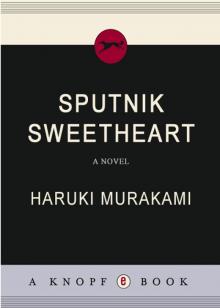 Sputnik Sweetheart
Sputnik Sweetheart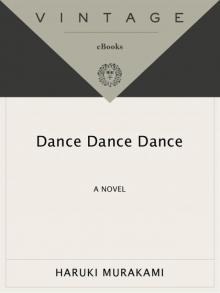 Dance Dance Dance
Dance Dance Dance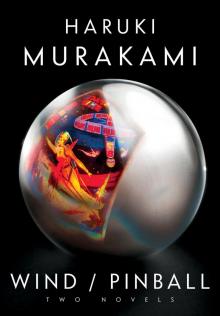 The Wind (1) and Up Bird Chronicle (2)
The Wind (1) and Up Bird Chronicle (2)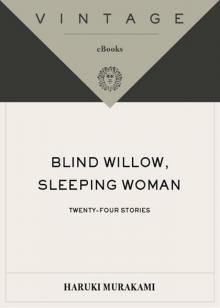 Blind Willow, Sleeping Woman
Blind Willow, Sleeping Woman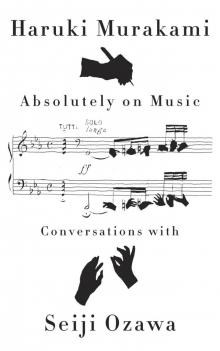 Absolutely on Music: Conversations With Seiji Ozawa
Absolutely on Music: Conversations With Seiji Ozawa Norwegian Wood
Norwegian Wood South of the Border, West of the Sun
South of the Border, West of the Sun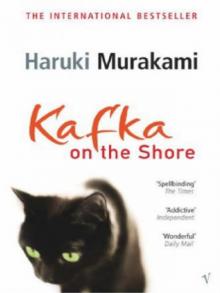 Kafka on the Shore
Kafka on the Shore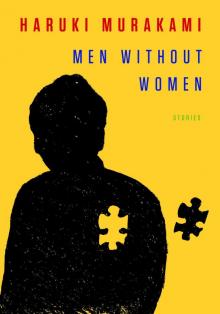 Men Without Women
Men Without Women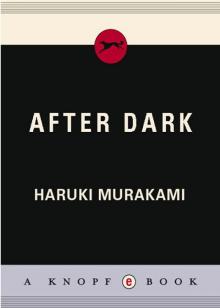 After Dark
After Dark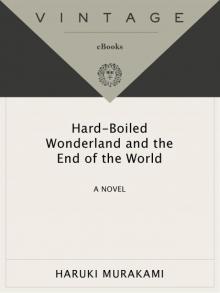 Hard-Boiled Wonderland and the End of the World
Hard-Boiled Wonderland and the End of the World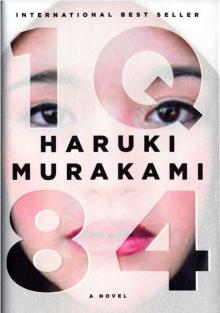 1q84
1q84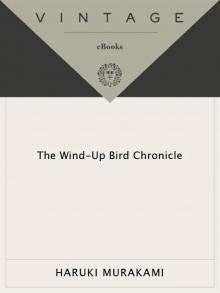 The Wind-Up Bird Chronicle
The Wind-Up Bird Chronicle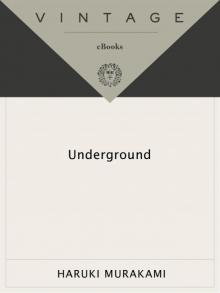 Underground: The Tokyo Gas Attack and the Japanese Psyche
Underground: The Tokyo Gas Attack and the Japanese Psyche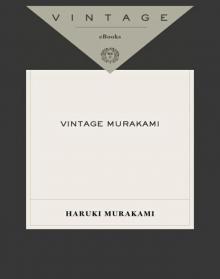 Vintage Murakami
Vintage Murakami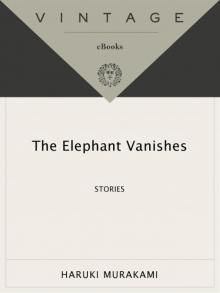 The Elephant Vanishes: Stories
The Elephant Vanishes: Stories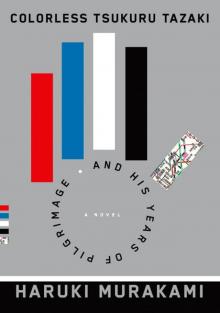 Colorless Tsukuru Tazaki and His Years of Pilgrimage
Colorless Tsukuru Tazaki and His Years of Pilgrimage First Person Singular
First Person Singular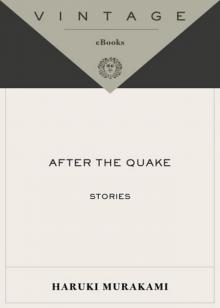 After the Quake
After the Quake A Wild Sheep Chase
A Wild Sheep Chase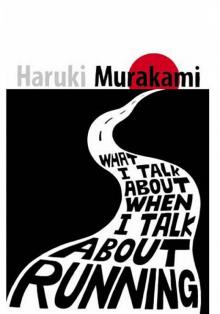 What I Talk About When I Talk About Running
What I Talk About When I Talk About Running Birthday Girl
Birthday Girl The Elephant Vanishes
The Elephant Vanishes Norwegian Wood (Vintage International)
Norwegian Wood (Vintage International)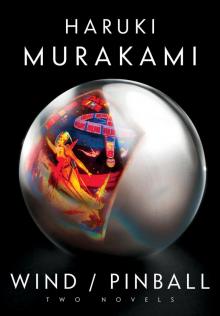 Wind/Pinball
Wind/Pinball Norwegian Wood Vol 1.
Norwegian Wood Vol 1.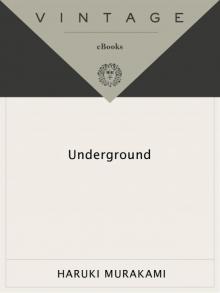 Underground
Underground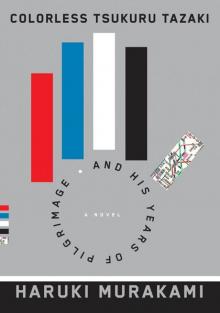 Colorless Tsukuru Tazaki and His Years of Pilgrimage: A novel
Colorless Tsukuru Tazaki and His Years of Pilgrimage: A novel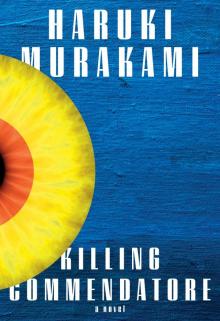 Killing Commendatore
Killing Commendatore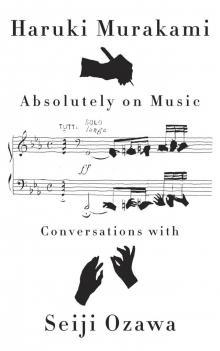 Absolutely on Music
Absolutely on Music